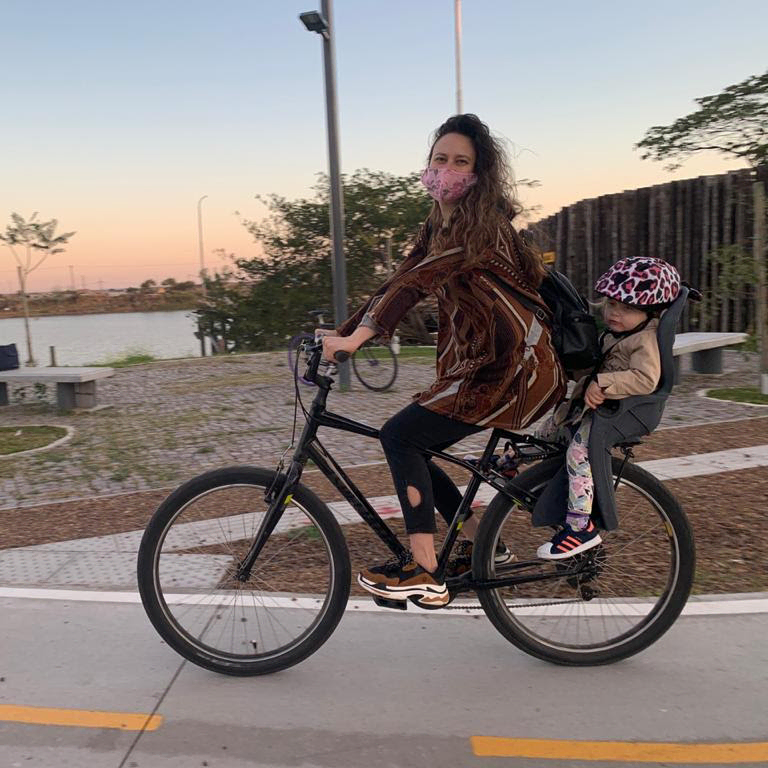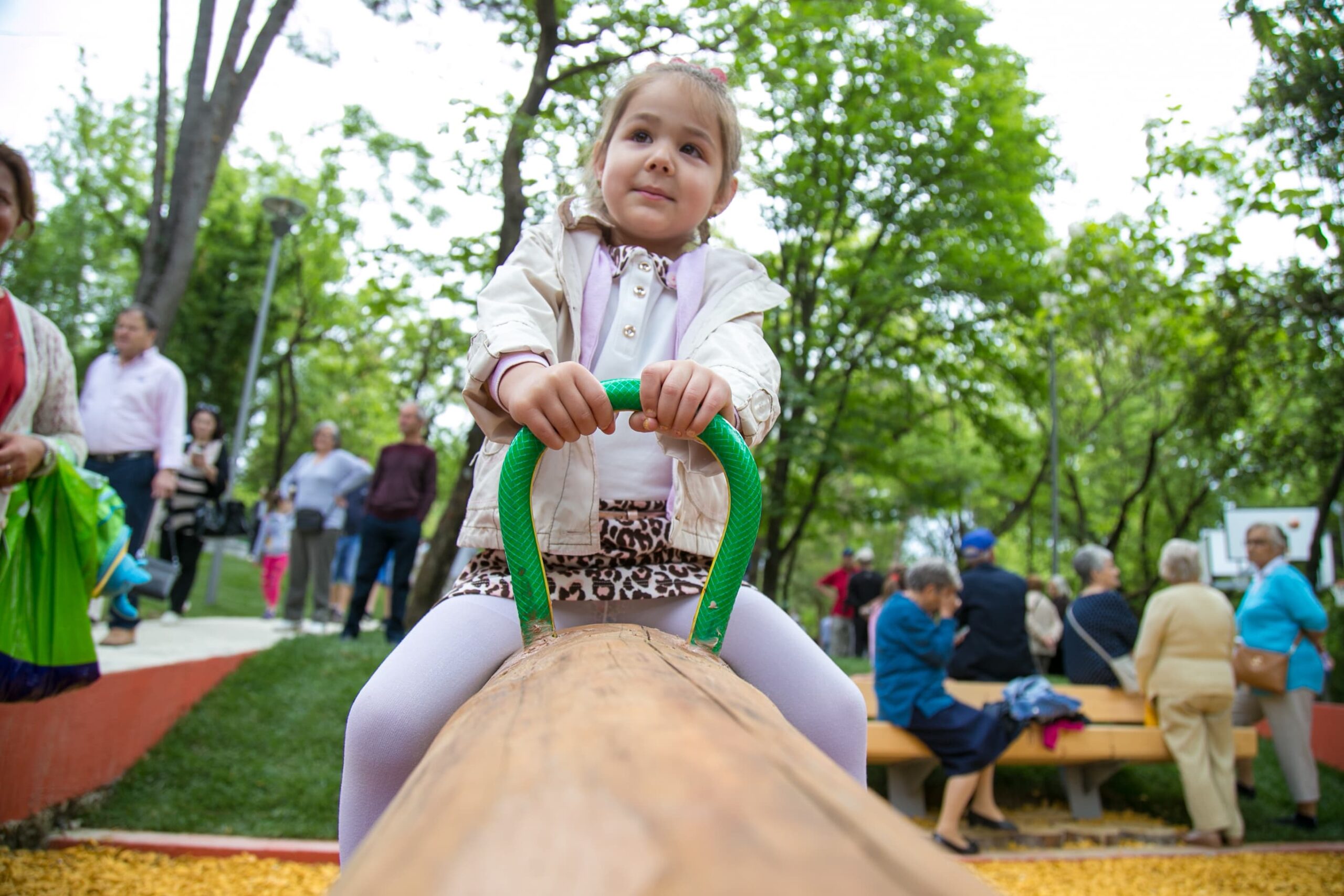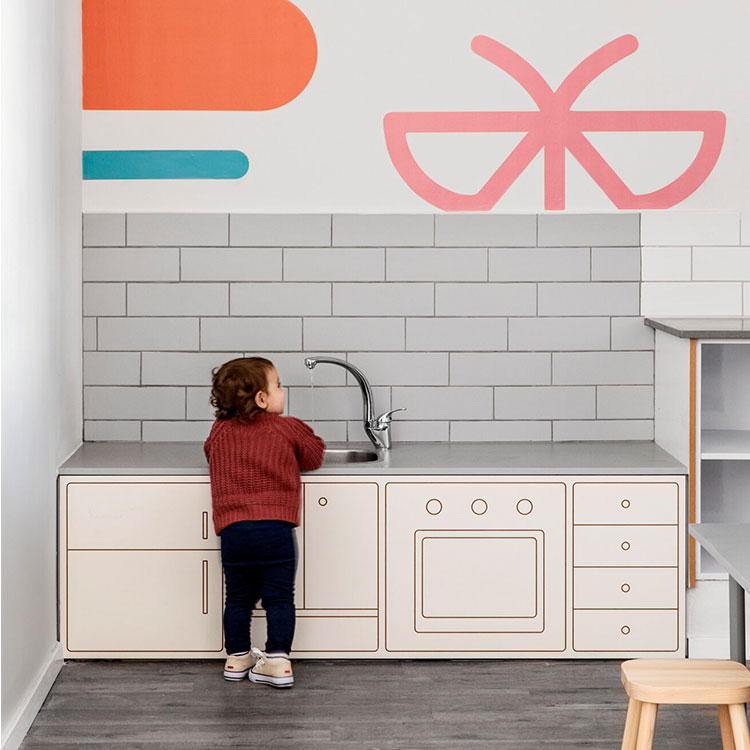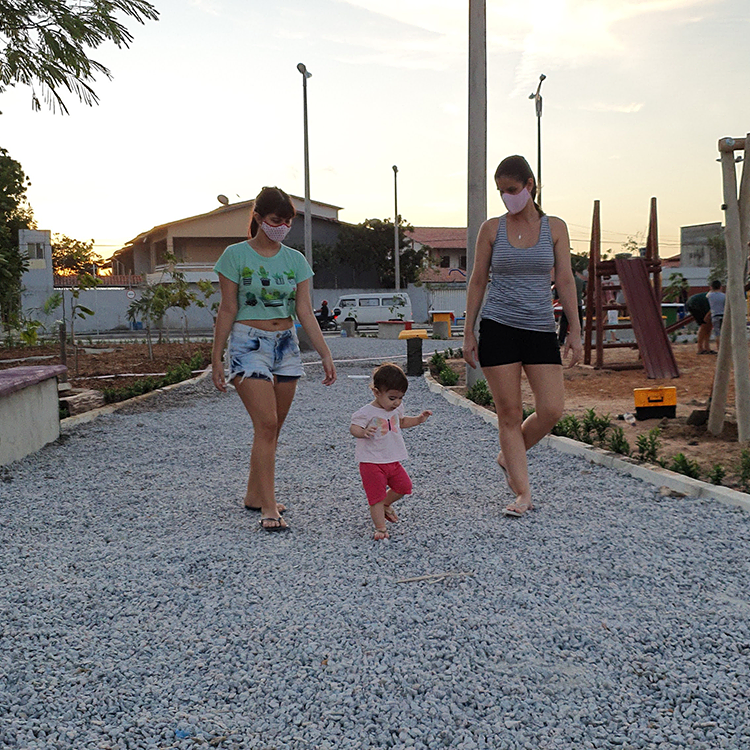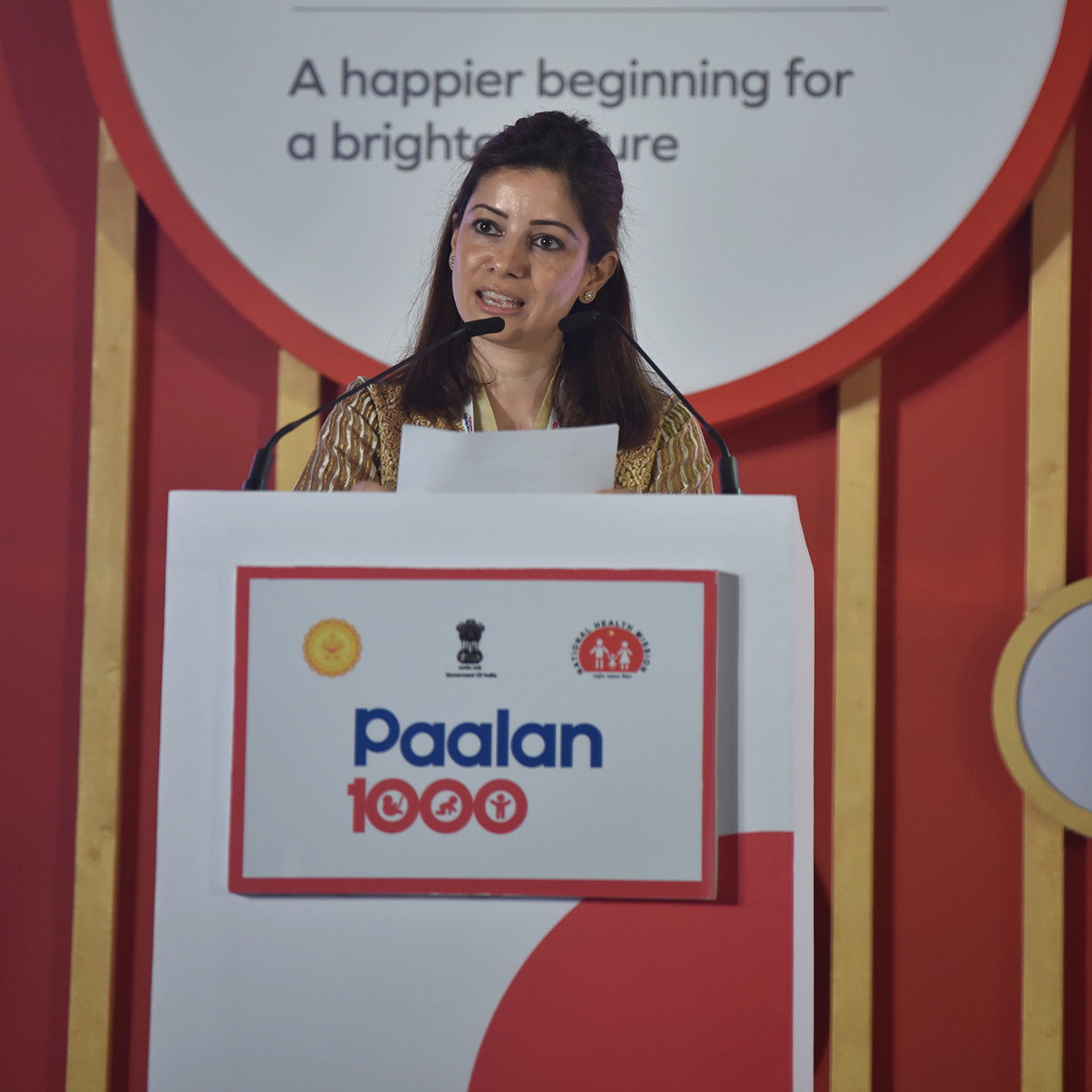I have been a cycling activist for eight years. For the last three of those years I have also been a mother, and enjoyed riding a bike with my daughter Antonia. All the stresses and fatigue of parenting in a pandemic vanish instantly when you’re pedalling with the wind in your face, and you hear a little voice singing happily.
Riding a bicycle is not only a form of healthy and sustainable mobility, it is also a tool for social transformation that can change people’s lives in our cities. It is a beautiful experience for an adult to ride a bike, and – in safe and appropriate conditions – even more so for a child who is just beginning to discover the world.
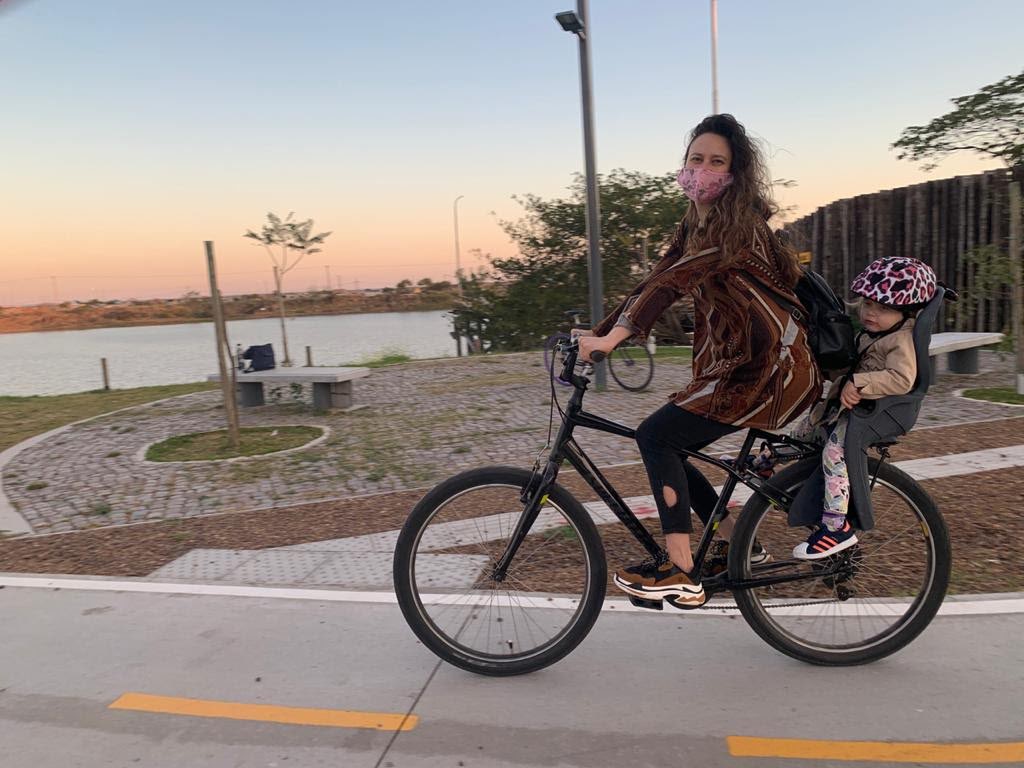
Picture: Mariana and Antonia on their bike; Courtesy of Mariana Salvador, Santa Fe.
Last year, the Bernard van Leer Foundation published a study into cycling and early childhood. It highlights the physical connection a child feels when holding onto their parent as they ride together. Feeling this kind of “secure attachment” is important for a child’s development, says Linda O’Donoghue, Professor of Child Health, Education and Development at Bow Valley College in Calgary, Canada.
Cycling also provides opportunities for children to develop their speaking and listening skills through conversations with their caregiver about their shared experiences as they ride along. In my case, for example, I talk with Antonia about everything we encounter: the flowering tree, the store where we shop, the kittens under the bridge.
When children ride on a bicycle, with their caregiver or on their own, they gain a greater knowledge of their neighbourhood and city. They learn to organise spatial knowledge and become socio-spatial actors. Francesco Tonucci, in his book “The City of Children”, writes:
“When a child is in the back seat of a car, they cannot see the city or perceive its characteristics. The journey passes too quickly for them to be present and curious. Instead of making stops to explore, we speed them along towards a destination. The child does not manage to understand anything, to organize their space and build their city. Today’s children often grow up with problems of spatial organisation and with very little knowledge of their neighbourhood.”
Cycling likewise helps children to understand traffic regulations from an early age, establishing a sense of order and the social norms that will allow them to coexist in public space. They grow to understand the dangers of other vehicles on the road and become aware of the caution they should exercise.
The bicycle’s relationship with care tasks is also interesting. The National Institute of Women reports that women of reproductive age spend an average of seven hours a day on unpaid domestic work, compared to three for men. This often means that mothers do not have enough time for themselves or to enjoy being with their children. Riding a bike allows you to combine some care tasks, such as shopping, with spending time with your child.
Advice for parents
I recommend a seat at the front of the bike for the youngest children, so they can see your face as you talk to them. As they get a little older, switch to a seat behind you that has a high back, so the child’s head is not exposed, and space for them to be comfortable with a helmet on. The seat should also have armrests, support for their feet and a safety belt to protect them in the event of a fall.
In many countries, cargo bikes are widely used. They allow you to carry more than one child, or plenty of shopping.
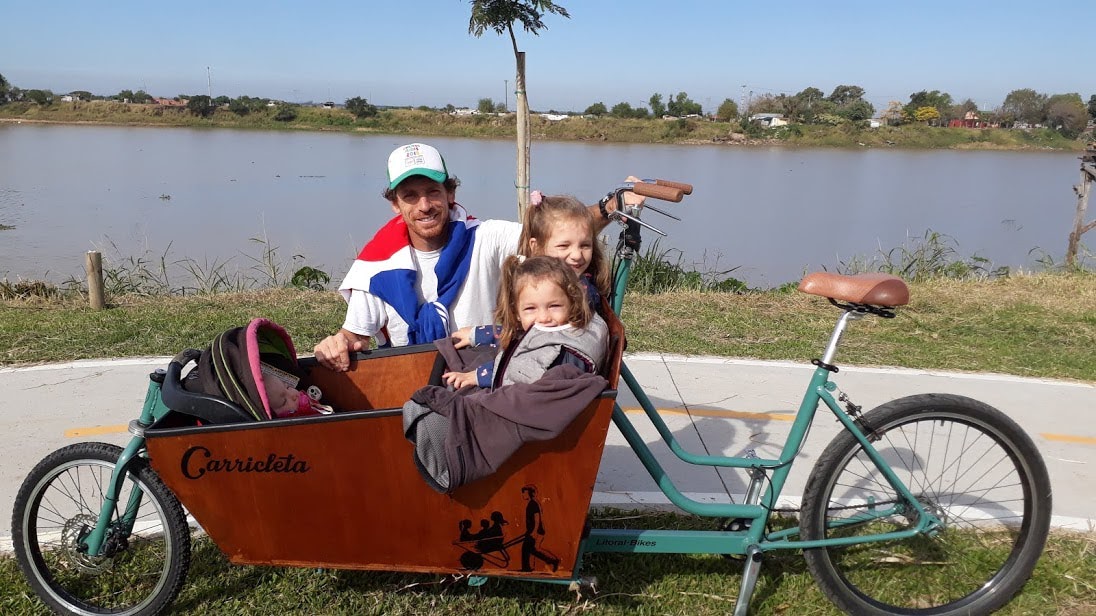
Picture: cargo bike; Courtesy of Federico de la Peña, Santa Fe.
From the age of two, children can have their own bicycle. A balance bike, without pedals, is much easier to start with. Children push off and brake with their feet on the ground. Sometimes they start off just by walking with the bicycle between their legs, until they gain the confidence to sit on it, push off and lift their feet off the ground.
Balance bikes enhance children’s psychomotor skills and improve their sense of orientation. And they enable the child to experience from a young age how a bicycle gives them autonomy and independence.
The Danish Embassy of Cycling suggests games to improve balance – for example, while a child is riding their bike, try to catch bubbles or grab a ball and place it in a bucket. This helps the child to stay balanced while letting go with one hand, and also gives them practice at paying attention to something else while riding – a skill that will be useful later in situations such as traffic lights or street intersections.
Many cities are still not set up for safe urban cycling. But even when dedicated bike lanes are not available, you will find that some times of day are better than others. In my city I go out frequently on weekends and holidays – and even from Monday to Friday it is usually quite quiet in the mornings, after the rush hour.
There is now a worldwide movement for “recreational streets”, that encourages cities to rethink what streets are for. Closing streets to motorised vehicles once a week is a high-impact, low-cost measure. Every neighbourhood in a municipality can be asked to open at least one street for people. Whenever that happens, soon the street will be full of life – children riding bikes and playing hopscotch, and elderly people also feeling safe to get out and about. Seeing this happen is a reminder that it is people, not buildings, who make a city.
This blog is written by Mariana Salvador and is translated and republished with permission. The original blog in Spanish can be read here.
Mariana Salvador is BYCS‘ bicycle mayor in Santa Fe, Argentina, and an activist for sustainable and equitable cities. She is a lawyer specialized in the environment and currently works at the Ministry of Environment and Climate Change of the Province of Santa Fe, Argentina.
